Many modern historians believe that the main driving force of the Abkhaz revolutionaries was not the victory of the socialist revolution, but the idea of Abkhaz statehood. This statement can be attributed to Efrem Eshba. The essay of the WAC web portal is about this famous person and a revolutionary.
Arifa Kapba
Efrem Eshba was born on March 7, 1893 in the Eshkyt settlement of the Bedia village in the family of a nobleman Alexey Zurabovich Eshba. Efrem was the youngest of five children. His father passed away early, the mother was engaged in raising children - Marta Zurabovna Apakidze. Older children studied in a rural single-class parochial school founded in the village of Bedia in 1887 by Thomas Khristoforovich Eshba, who is popularly called the “grandfather of the Abkhaz school”.
Craving for studying
Little Efrem, who was still not admitted to school, still went to class with his brothers, and his first teacher Nestor Toloraya, noting that Efrem did not interfere with other students, but also showed great abilities, did not prevent so that the boy attended classes.
Efrem Eshba was only nine years old when his mother alone, having seated him and older children on an arba, decided to take them to Sukhum to place in Mountain School (now Sukhum Mountain Secondary School No. 10 named after Nestor Lakoba – ed.). Of all the children only Efrem managed to enter this school, which was considered at that time first-class, who showed excellent initial training.
He brilliantly studied, graduated from school in 1906 and entered the Kutaisi Classical Gymnasium.
“Efrem stood out among his comrades on general development. He was a capable and gifted student. One could easily ask him for help, and he never denied it. Efrem was able to very simply, sensibly explain any task, lesson. In the Kutaisi Gymnasium, Efrem also studied music. He played the clarinet in a gymnasium brass band,” Professor Georgy Dzidzaria writes in his essay on the life of Eshba.
In 1909, Efrem, exhausted by chronic malaria in Kutaisi, left for Tiflis and entered the First Men's Gymnasium there. Without receiving any support from home, he was forced to support himself and learn at the same time. Eshba engaged in private lessons - preparing students for exams.
In Tiflis, Efrem Eshba formed revolutionary views; he and his friends organized a revolutionary group under the guise of a literary circle. When his participation in the circle was exposed, there was a scandal, he was deprived of scholarships, but the excellent knowledge that he showed in the gymnasium kept him afloat. In 1913, Eshba graduated from this educational institution with a gold medal and entered the law faculty of Moscow University.
Moscow University and revolutionary circles
In his autobiography, Efrem Eshba notes that in 1914 he joined the Bolshevik Party. As a student at Moscow University (now Moscow State University named after M.V. Lomonosov (MSU) - ed.), he actively participated in underground university revolutionary, or rather “Marxist” groups of students, and even appeared under the nickname Motylek.
In March 1916, Eshba, along with some of his fellow students, was arrested “for active revolutionary activities,” but in September the Moscow Military District Court released students for the lack of evidence of the charges. Friends advised Eshba to go somewhere. He did just that: he went to Trapezund (now Trabzon -ed.), where he got a job as a foreman (the eldest over a group of workers - ed.) in the engineering and construction squad.
Wherever Eshba appeared, he was everywhere engaged in propaganda of the Bolshevik Party and revolutionary ideas, and because of this, he was persecuted everywhere. From Trapezund, he went to Batum, it is known that he lived there under another name, and a letter came to him from Moscow University in which he was informed that he was expelled from among the students.
Revolution and independence
On the eve of the 1917 revolution, Eshba returned to his native Abkhazia and began to engage in revolutionary activities there. In May 1917, Eshba was elected Chairman of the Sukhum district committee of the RSDLP (b) (Russian Social-Democratic Labor Party of Bolsheviks - ed.), and later chairman of the Council of Workers and Deputies.
During the period of the power struggle in Abkhazia between the Mensheviks and the Bolsheviks from 1917 to 1921, Efrem Eshba was next to Nestor Lakoba at the leadership of Bolsheviks. According to Professor Georgy Dzidzaria, it was during this period that Eshba showed a special organizational talent.
In March 1921, the main revolutionaries of Abkhazia - Efrem Eshba, Nestor Lakoba and Nikolai Akirtava told Lenin in Moscow that the Red Banner of the working people had been hoisted over Sukhum. Many modern historians are sure that the main driving force of these people was not at all the victory of the revolution, but the thoughts of Abkhaz statehood.
Already on March 28, 1921, a meeting of senior officials of the Caucasus Bureau of the Central Committee of the RCP (b) (Caucasus Bureau of the Central Committee of the Russian Communist Party of Bolsheviks - ed.) of Georgia and Abkhazia was held under the chairmanship of Sergo Ordzhonikidze and with the participation of Efrem Eshba. The meeting decided to proclaim Abkhazia an independent Soviet socialist republic. This decision was immediately reported by Eshba, Lakoba and Akirtava to the Kremlin, presenting the announcement of the independent Abkhaz socialist republic as “a new slap in the face that the Great October Revolution inflicted upon the oppressors of small nations — the imperialists of all countries and their lackeys”.
Family
In 1922, Efrem Eshba was appointed Minister of Justice of the Georgian Socialist Republic. By this time he was already married to the first Tiflis beauty, the daughter of a disgraced Russian general, exiled to the Caucasus, Maria Vladimirovna Shchigrovskaya.
Here is how she described the meeting with Eshba: “I met Efrem at the Council of People's Commissars, which was then located in the building where the Palace of Pioneers is now located. Efrem had an eye ache then, and he wore a black bandage. He was very shy and delicate. It was even strange to see how this militant revolutionary turns red and embarrassed. Our acquaintance turned into something more. I liked him for his education and some kind of knightly delicacy. Efrem invited me to visit Abkhazia. In August 1921, Efrem, Peter Agniashvili and I went to Sukhum. This trip brought us closer together. We realized that we could not part, and got married. Efrem was a caring spouse and a good father.”
In 1924, Eshba graduated from the so-called Red Professorship Institute in Moscow, after which he was sent to London with his family and became the head of the instructor department of the trade mission. Eshba’s wife noted that they lived happily in London: “When we lived in London, often free time was spent together in museums, parks, and art galleries. We both spoke English, and this made it easier for us to explore the British capital. When our daughters Marina and Liza grew up, Efrem willingly worked with them, read books to them, told funny stories that he himself invented. The children loved walking with their father.”
In modern terms, Efrem Eshba managed to make a dizzying bureaucratic career. After London he lived and worked in the United States as the head of the Amtorg Inspectorate (a joint-stock company established in the United States to promote the development of Soviet-American trade in the early years of Soviet Russia - ed.), then until 1935 he held high positions in the People's Commissariat of Foreign Trade and then People's Commissariat of Heavy Industry of the USSR.
Execution
In the years of repression, Efrem Eshba, like other prominent statesmen, becomes the target of Stalin and Beria. They quickly fabricated a case against him: he allegedly actively participated in the anti-Soviet Trotskyist (adherent to the theory of the development of Marxism based on the views set forth by Leo Trotsky - ed.) Organization and on the instructions of British intelligence led espionage and insurgent work. In 1936, Eshba was arrested and placed in the Butyrka prison in Moscow, then sent to Vladivostok, then to Magadan. According to recently available
information, in 1939, Eshba was sent to Grozny, it was believed that he was sentenced to death there. However, no one could reliably say where he was buried. One of the daughters of Efrem Eshba, the famous Abkhaz sculptor Marina Eshba, considered this fact a tragedy of her life, as well as the fact that the remains of her father were not buried in his homeland, in Abkhazia. After the death of Marina Efremovna, his grandson, musician and teacher Viktor Abramyan-Eshba, was looking for a real burial place of Efrem Eshba. Recently, the grave of the famous Abkhaz revolutionary was discovered in Moscow.
“According to the documents that my parents managed to read in the KGB archives in the early 1990s, Efrem Eshba was shot in Moscow or in the region, and was buried in the general burial of the repressed at the Butovo training ground or at the training ground in the village of Kommunarka near Moscow. I visited the last place hoping to see the name of my grandfather. This is what happened. Among the more than 6,000 names and surnames, the name and surname of Efrem Eshba was written on the wall, and the date of death was also indicated: April 14, 1939,” said the grandson of Efrem Eshba, Victor Abramyan-Eshba.
In October 2018, a wall in memory of Efrem Eshba was opened on the former special object of the NKVD in the village of Kommunarka.
References:
- Abkhaz Biographical Dictionary.
- “Efrem Eshba” essay by Georgy Dzidzaria.
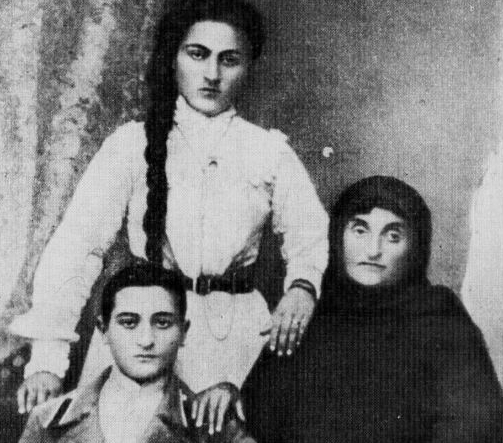
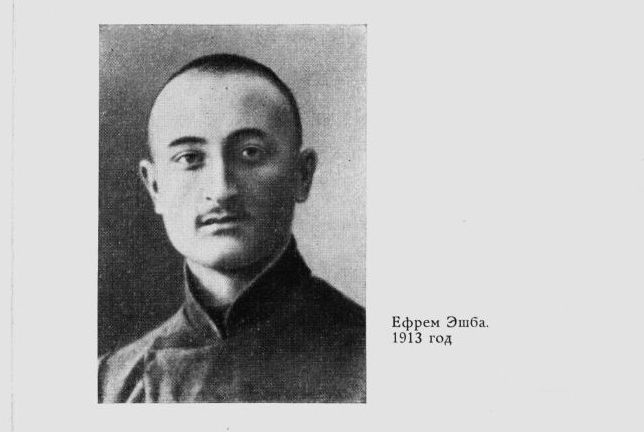
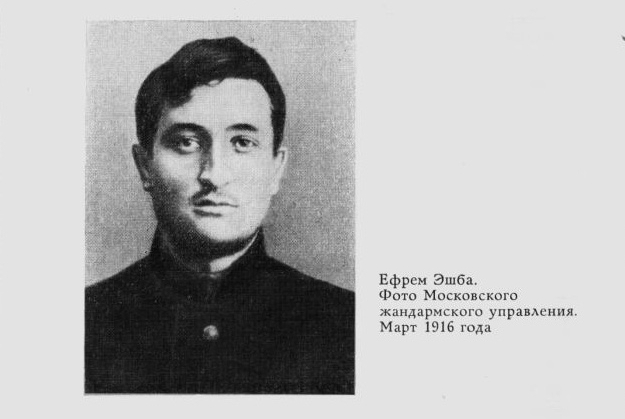
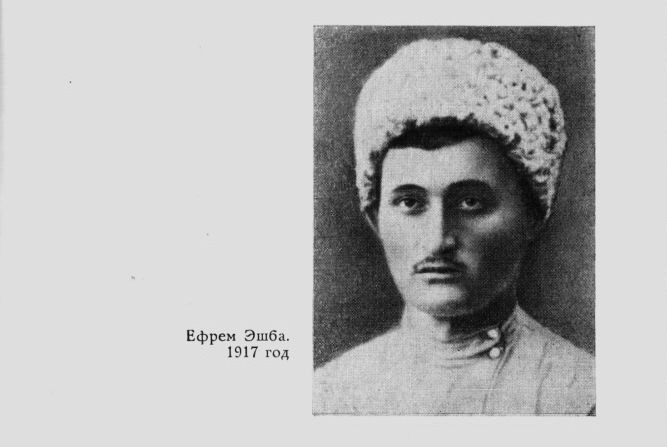
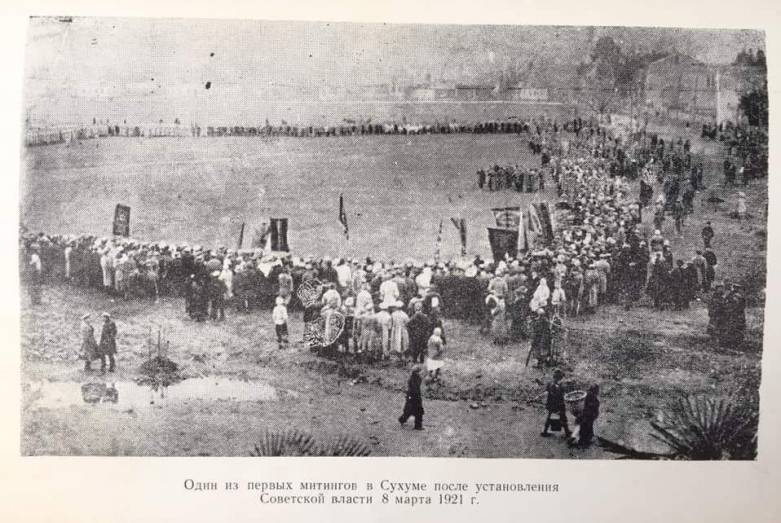
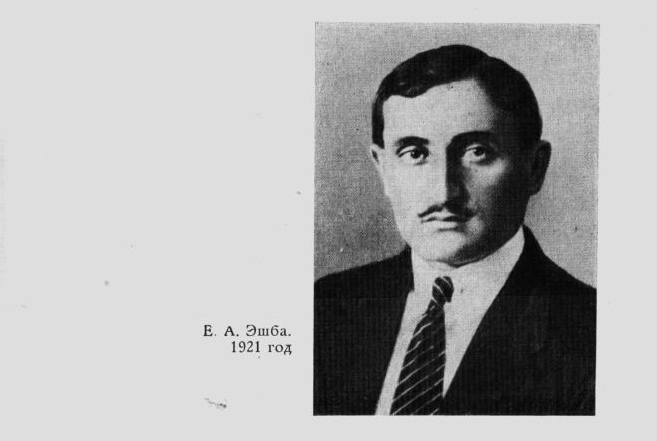

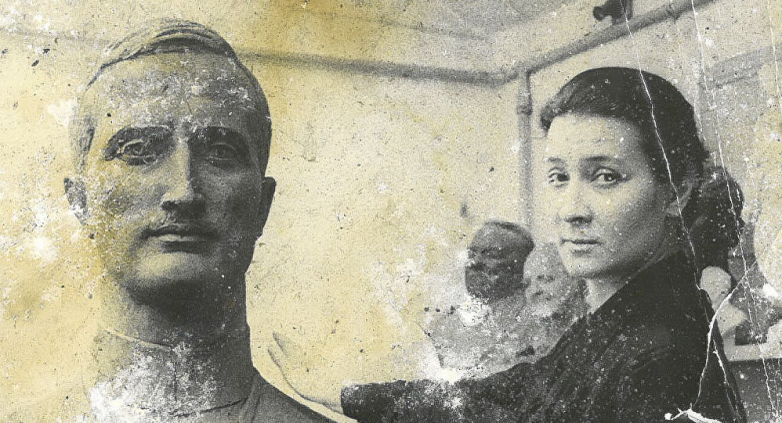
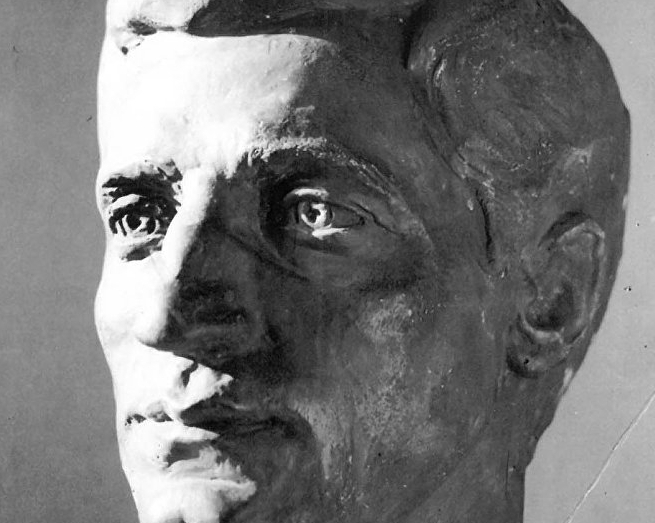
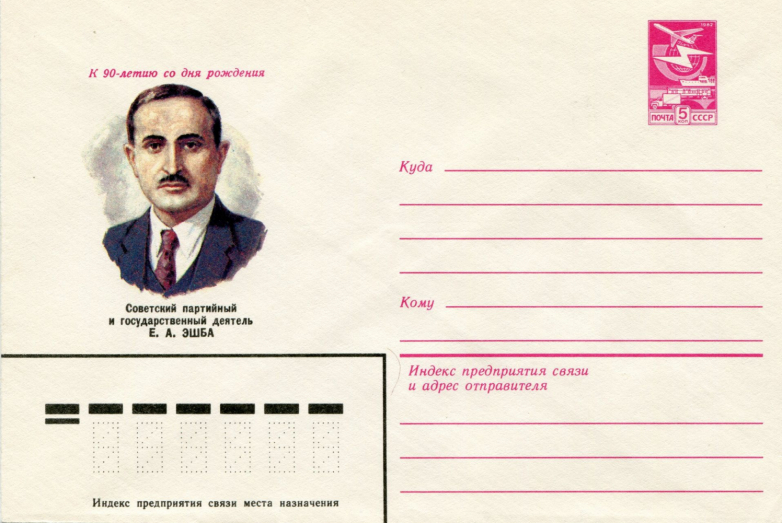
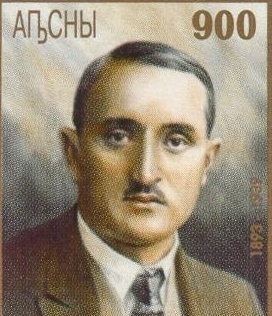
to login or register.